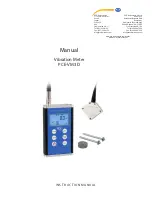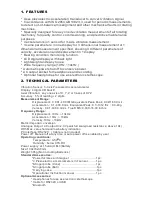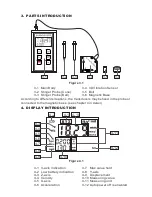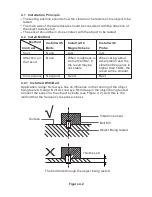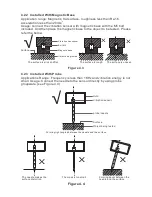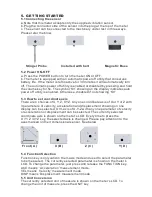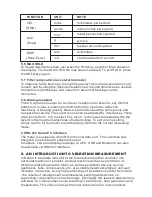
6.3 Measurement Techniques
In general, vibration of anti-friction bearings is best monitored in the load zone
of the bearing. Equipment design often limits the ability to collect data in this
zone. Simply select the Measurement Point which gives the best signal. Avoid
painted surfaces, unloaded bearing zones, housing splits, and structural gaps.
When measuring vibration with a hand-held sensor, it is very important to
collect consistent readings, paying close attention to the sensor’s position on
the machinery, the sensor’s angle to the machinery, and the contact pressure
with which the sensor is held on the machinery.
. Location - always collect at the same point on the machine. Mark locations.
. Position - Vibration should be measured in three directions:
A axial direction; H horizontal direction; V vertical direction
Please define A, H, V as X, Y, Z axes respectively.
. Angle - Always perpendicular to the surface (90
°±
10
°
).
. Pressure - Even, consistent hand pressure must be used (firm, but not so
firm as to dampen the vibration signal). For best results ,use the magnetic
base. If using the stinger/probe is the only method available to collect data, it
is best to use a punch to mark the location for the probe-tip to ensure a
consistent coupling to the housing.
7.1 When the battery symbol appears on the display, it is time to replace the
battery.7.2 Slide the Battery Cover away from the instrument and remove the
batteries.
7.3 Install batteries paying careful attention to polarity.
7. BATTERY REPLACEMENT
A. Rank of machine vibration (ISO 2372)
Vibration
Amplitude
Vibration
Velocity
V rms (mm/s)
0~0.28
0.28~0.45
0.45~0.71
0.71~1.12
1.12~1.8
1.8~2.8
2.8~4.5
4.5~7.1
7.1~11.2
11.2~18
18~28
28~45
>
45
A
A
A
A
B
B
B
B
C
C
C
C
D
D
D
D
Machine sort
I
II
III
IIII
8. APPENDIX: VIBRATION STANDARDS

